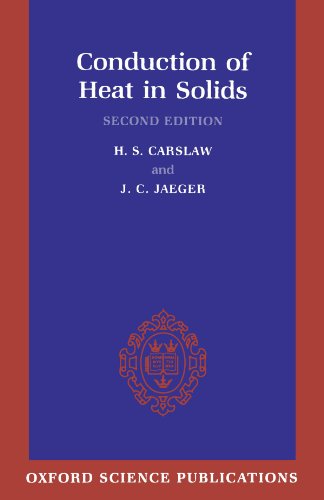Conduction of Heat in Solids ebook
Par porter tracy le vendredi, octobre 7 2016, 00:31 - Lien permanent
Conduction of Heat in Solids. H. S. Carslaw, J. C. Jaeger

Conduction.of.Heat.in.Solids.pdf
ISBN: 0198533683,9780198533689 | 517 pages | 13 Mb

Conduction of Heat in Solids H. S. Carslaw, J. C. Jaeger
Publisher: Oxford University Press, USA
In general “heat transfer” can be considered to explain both the Mpemba and the Leidenfrost effect, and there are three modes of heat transfer. Conduction is heat transfer from warm to cooler areas within a material, or between two materials touching each other. It is also an efficient method of conduction in liquids, but occurs hardly at all in gases. Liquids: Most of the liquids transfer heat very well. Conduction; that is, heat being transferred from a heated solid to an unheated solid. Heat spontaneously tends to flow from a body at a higher temperature to a body at a lower temperature. Conduction is the mechanism by which heat is transferred within material objects and between material objects that are in physical contact with one another. Such bad conductors of heat are called insulators. Convection; that is, the transfer of heat from one place to another through the movement of fluids or gases. Houses lose a lot of heat through their windows even when they're shut. Conduction takes place in all forms of ponderable matter, such as solids, liquids, gases and plasmas. Introduction to the mathematical theory of the conduction of heat in solids. In solids, this transfer is called conduction. Home made 6x7 tilt shift camera, tominon 127mm f4.7,red filter, Ilford PanF 50, Ilfosol3. This is the primary method of heat transfer in solids and it works best of all in metals (because loosely bound electrons play a role). Conduction and Convection Conduction is most important in Solids. In this type of heat transfer, molecules don't move but they transfer energy using vibrations. Transfer of heat within a fluid is by convection. More energetic molecules in a hot substance collide with less energetic molecules in a colder substance, transferring energy and therefore heat. Gases, such as air, do not conduct heat very well. Transfer of heat in solids is by conduction.